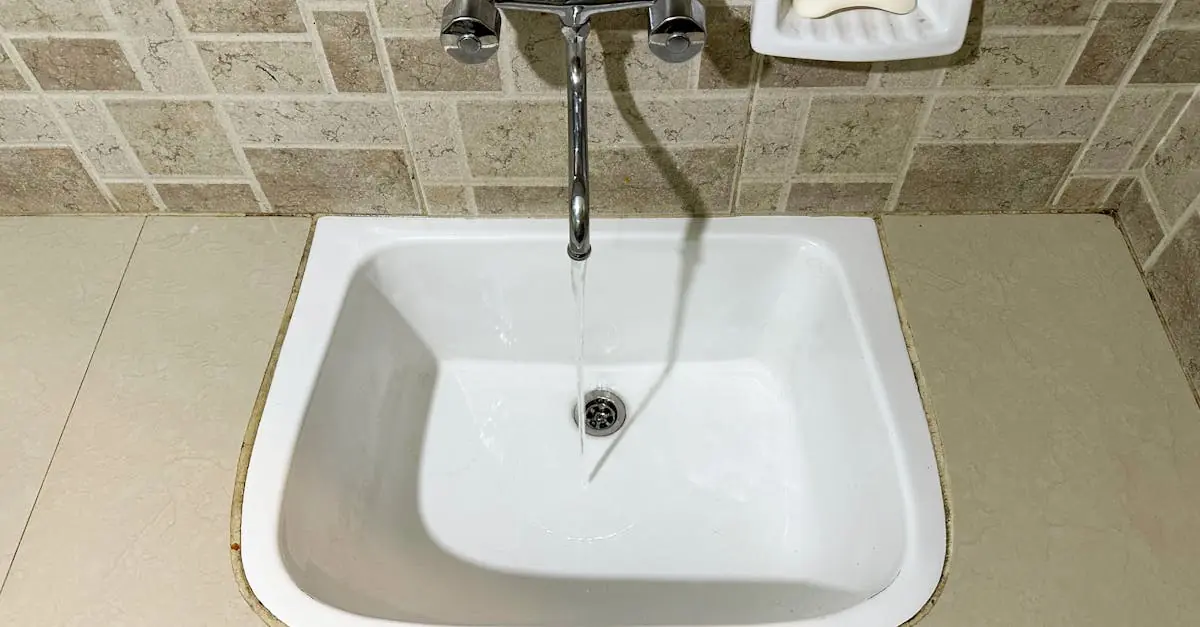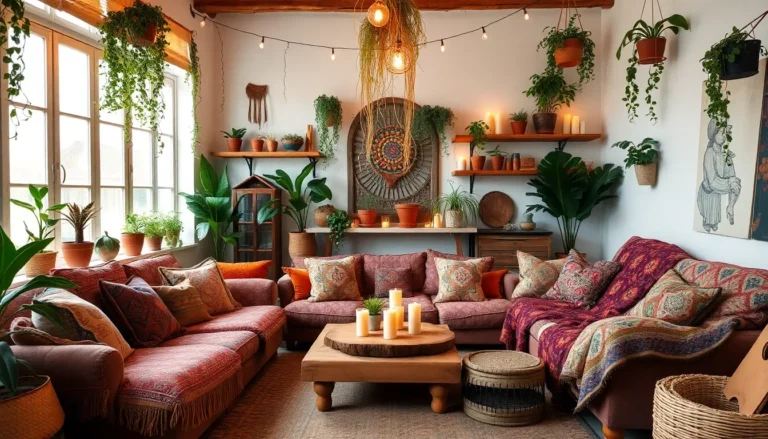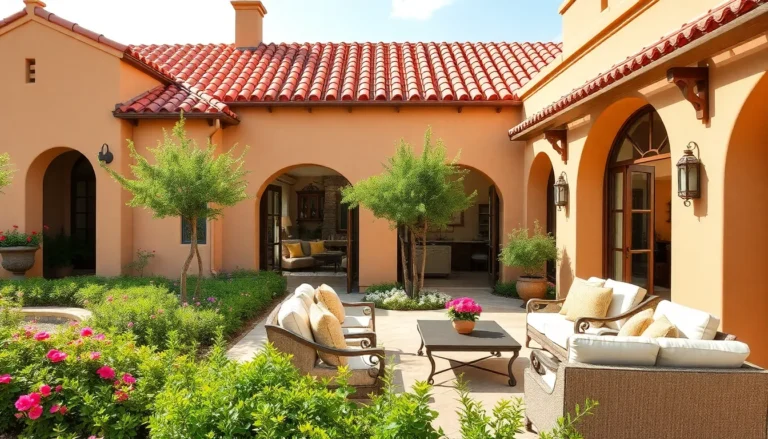Table of Contents
ToggleIn a world where form often overshadows function, the idea of “beautiful functionality” emerges like a superhero in a cape. It’s that magical blend where aesthetics and practicality dance together, creating products that not only look good but work even better. Imagine a coffee maker that brews the perfect cup while doubling as a sleek kitchen sculpture. Who says you can’t have your coffee and admire its beauty too?
Embracing beautiful functionality isn’t just about having a pretty face; it’s about enhancing everyday experiences. It’s the art of making life easier while keeping it stylish. From tech gadgets to home decor, this concept transforms mundane objects into must-have treasures. So buckle up as we explore how beauty and utility can coexist, proving that elegance doesn’t have to sacrifice efficiency.
Understanding Beautiful Functionality
Beautiful functionality involves creating products that balance aesthetics and usability. It represents a design philosophy where beauty doesn’t compromise practicality.
Definition and Concept
Beautiful functionality refers to the integration of attractive design with effective performance. Products embody this concept when their form enhances their function. For example, kitchen appliances should not only perform well but also elevate the kitchen’s visual appeal. A successful product captivates users with its elegance while ensuring ease of use. This concept extends across various industries, including furniture, technology, and fashion. Designers focus on achieving an emotional connection through beauty and utility, making items more desirable.
Importance in Design
In design, beautiful functionality plays a pivotal role in consumer choice. Customers often lean toward products that offer both style and efficiency. These products create a richer experience by inviting interaction. A well-designed item can inspire creativity, motivate productivity, and foster satisfaction. Businesses gain a competitive edge when they prioritize this balance, as consumers value aesthetics alongside performance. Adopting beautiful functionality not only enhances brand loyalty but also encourages positive word-of-mouth marketing. Ultimately, integrating beauty with practicality boosts overall satisfaction in daily routines.
Examples of Beautiful Functionality
Beautiful functionality appears vividly in various domains. Architecture and product design serve as excellent examples.
Architecture
Architects integrate beautiful functionality in structures that embody both elegance and utility. Modern buildings often feature open floor plans, allowing for natural light and seamless movement. Sustainable materials, like reclaimed wood and recycled steel, not only enhance aesthetics but also promote environmental responsibility. Iconic examples include the Sydney Opera House, which combines a striking design with practical performance spaces. Functionality in architecture ensures that spaces remain enjoyable and usable over time, benefiting both occupants and communities.
Product Design
Product design showcases beautiful functionality through everyday items that combine form and function. A kitchen knife, for instance, can feature an ergonomic handle while boasting an aesthetically pleasing blade design. Designer furniture, such as chairs that prioritize both comfort and visual appeal, exemplifies this balance. The iPhone illustrates this concept through its sleek design and user-friendly interface, empowering users with both style and performance. Thoughtful product design not only captivates consumers but also improves daily routines by making life more efficient and enjoyable.
Benefits of Beautiful Functionality
Beautiful functionality significantly elevates user experiences. Products that integrate aesthetic design and usability create lasting impressions. Customers appreciate the blend of elegance and practicality in everyday items. For instance, ergonomic kitchen tools not only look appealing, but also reduce strain during use. Hence, it’s crucial to prioritize the seamless combination of beauty and functionality to enhance satisfaction.
Enhancing User Experience
User experience improves when beauty and functionality coexist. Well-designed items cater to the needs of users while providing visual pleasure. Users feel more inclined to engage with products that reflect style and improve usability. For example, smartphone interfaces that combine attractive layouts with intuitive navigation foster satisfaction among users. Such holistic design approaches create emotional connections and promote enjoyable interactions. Consequently, businesses that emphasize this balance create loyal customers who appreciate thoughtful design in their daily lives.
Impact on Aesthetics
Aesthetics play an essential role in how products are perceived. Beautifully designed items enhance their environments and contribute to overall appeal. Objects such as stylish furniture or artful appliances serve dual purposes: they provide functionality and elevate interior spaces. High-quality finishes and modern aesthetics resonate with consumers seeking elevated lifestyle experiences. A visual feast, combined with practicality, attracts attention and encourages positive feelings. Therefore, prioritizing beautiful functionality creates products that not only perform well, but also inspire admiration and enjoyment.
Challenges in Achieving Beautiful Functionality
Beautiful functionality faces significant challenges in design, particularly in balancing aesthetic appeal with practicality.
Balancing Form and Function
Designers often struggle to create products that satisfy both visual and functional requirements. Achieving harmony between these two elements requires careful consideration of user needs and context. Designers must prioritize usability without sacrificing aesthetics, ensuring that each product serves its intended purpose effectively. For instance, an ergonomic chair needs to provide comfort and support while also capturing attention with its modern look. When designers effectively merge form and function, products resonate deeply with users, enhancing overall satisfaction.
Cost Considerations
Cost poses a major challenge in delivering beautiful functionality. High-quality materials and craftsmanship often drive up production costs. Businesses face the dilemma of maintaining affordability for consumers while ensuring that products reflect both durability and aesthetic value. When companies invest in design and quality, they create unique offerings that can distinguish them in a competitive market. However, the price point must remain accessible to attract a wider customer base. Balancing cost with beautiful functionality demands strategic planning and innovation in both materials and design processes.
Conclusion
Beautiful functionality redefines everyday experiences by merging aesthetics with practicality. This design philosophy not only enhances the appeal of products but also fosters deeper emotional connections with users. As consumers increasingly seek items that embody both style and efficiency, businesses that prioritize this balance can differentiate themselves in a competitive landscape.
The journey toward achieving beautiful functionality may present challenges, but the rewards are significant. By focusing on user needs and innovative design, companies can create products that not only perform exceptionally but also inspire admiration. Ultimately, embracing beautiful functionality leads to a more enriched lifestyle, transforming ordinary objects into cherished treasures that elevate daily routines.







